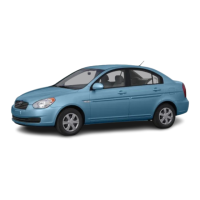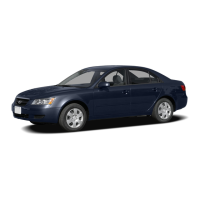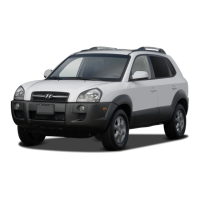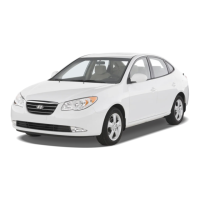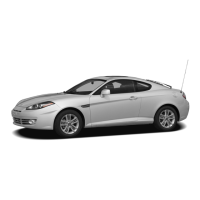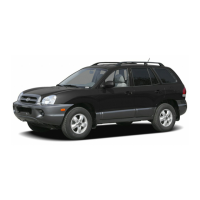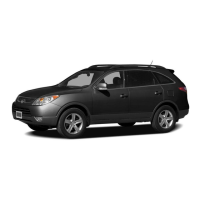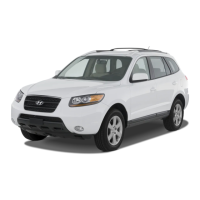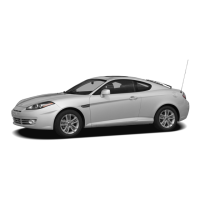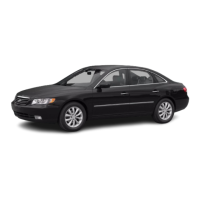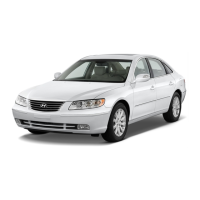Do you have a question about the Hyundai 2007 Azera and is the answer not in the manual?
Guidance on appropriate fuel types and octane ratings for optimal engine performance.
Essential safety information regarding the proper use and precautions for seat belts.
Detailed explanation of the airbag system, its components, and safety precautions.
Overview of the instrument cluster and the meaning of various indicator lights.
Pre-drive checks and procedures to ensure the vehicle is ready and safe for operation.
Explanation of the automatic transmission system, its positions, and operation.
Description of the ABS system and its function in preventing wheel lock-up during braking.
Explanation of the ESC system's role in maintaining vehicle stability and control.
Guidelines for safe and effective braking techniques under various driving conditions.
Troubleshooting steps for when the engine fails to start or starts slowly.
Instructions on how to safely jump-start a vehicle with a discharged battery.
Steps to take if a tire goes flat, including safe roadside procedures.
Detailed procedure for safely changing a flat tire using the vehicle's tools.
Guidance on how to properly tow the vehicle to prevent damage.
Information on how corrosion forms and common causes to protect the vehicle.
Recommended methods and precautions for washing and waxing the vehicle's exterior.
Instructions for cleaning various interior surfaces like vinyl, leather, carpets, and windows.
Overview of required maintenance services and their importance for vehicle longevity.
Details on inspection, cleaning, adjustment, and replacement schedules for vehicle components.
Guidelines for more frequent servicing when the vehicle is used under severe driving conditions.
Identification of major components in the engine compartment for inspection and service.
Steps for checking the engine oil level and recommended oil specifications.
Instructions on how to replace the air cleaner filter for optimal engine performance.
Guide on how to replace various exterior and interior light bulbs.
Location and rating of fuses in the engine compartment for troubleshooting electrical issues.
Overview of the vehicle's emission control systems and their functions.
Information about the catalytic converter, its function, and important warnings for its operation.
Recommended tire pressures for optimal vehicle handling, tire life, and safety.
Step-by-step guide on how to check tire pressure correctly.
Information on how to report potential safety defects to NHTSA and Hyundai.
Key physical dimensions of the vehicle including length, width, height, and wheel base.
Detailed specifications of the engine, including type, displacement, bore, stroke, and timing.
Recommended types and quantities of fluids and lubricants for various vehicle components.
Guidance on appropriate fuel types and octane ratings for optimal engine performance.
Essential safety information regarding the proper use and precautions for seat belts.
Detailed explanation of the airbag system, its components, and safety precautions.
Overview of the instrument cluster and the meaning of various indicator lights.
Pre-drive checks and procedures to ensure the vehicle is ready and safe for operation.
Explanation of the automatic transmission system, its positions, and operation.
Description of the ABS system and its function in preventing wheel lock-up during braking.
Explanation of the ESC system's role in maintaining vehicle stability and control.
Guidelines for safe and effective braking techniques under various driving conditions.
Troubleshooting steps for when the engine fails to start or starts slowly.
Instructions on how to safely jump-start a vehicle with a discharged battery.
Steps to take if a tire goes flat, including safe roadside procedures.
Detailed procedure for safely changing a flat tire using the vehicle's tools.
Guidance on how to properly tow the vehicle to prevent damage.
Information on how corrosion forms and common causes to protect the vehicle.
Recommended methods and precautions for washing and waxing the vehicle's exterior.
Instructions for cleaning various interior surfaces like vinyl, leather, carpets, and windows.
Overview of required maintenance services and their importance for vehicle longevity.
Details on inspection, cleaning, adjustment, and replacement schedules for vehicle components.
Guidelines for more frequent servicing when the vehicle is used under severe driving conditions.
Identification of major components in the engine compartment for inspection and service.
Steps for checking the engine oil level and recommended oil specifications.
Instructions on how to replace the air cleaner filter for optimal engine performance.
Guide on how to replace various exterior and interior light bulbs.
Location and rating of fuses in the engine compartment for troubleshooting electrical issues.
Overview of the vehicle's emission control systems and their functions.
Information about the catalytic converter, its function, and important warnings for its operation.
Recommended tire pressures for optimal vehicle handling, tire life, and safety.
Step-by-step guide on how to check tire pressure correctly.
Information on how to report potential safety defects to NHTSA and Hyundai.
Key physical dimensions of the vehicle including length, width, height, and wheel base.
Detailed specifications of the engine, including type, displacement, bore, stroke, and timing.
Recommended types and quantities of fluids and lubricants for various vehicle components.
| Brand | Hyundai |
|---|---|
| Model | 2007 Azera |
| Category | Automobile |
| Language | English |
